As I was sitting on the amazing front deck of my latest listing in the Hollywood Heights neighborhood of the Hollywood Hills I decided to take deep into the neighborhood’s history. First, it’s a very small enclave – bounded by the Hollywood Bowl on the north, Highland Avenue on the east, Outpost Estates on the west, and Franklin Avenue on the south. And up here it can be hard to believe that busy Hollywood and Sunset Boulevards are so close by down below. It includes a number of notable historic homes and buildings and has been home to numerous people in the film and music industries, dating back to the silent film era. In fact, my listing at 1954 Pinehurst has its own bit of Hollywood history as well.
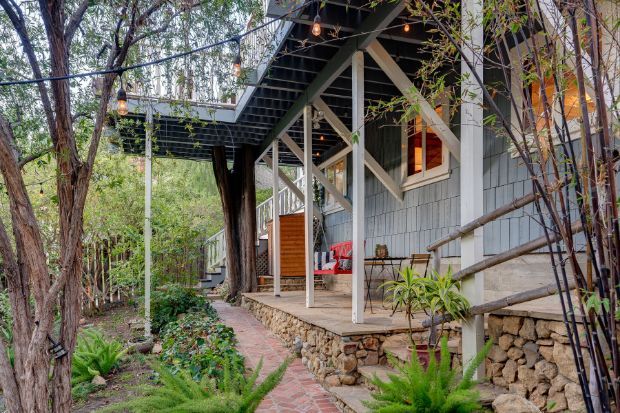
In the early 1900s, the land was the northern part of the Rancho La Brea Mexican land grant. H.J. Whitley, who is widely credited as the “The Father of Hollywood,” began developing the neighborhood as early as 1902 as part of his Hollywood-Ocean View Tract. Whitley, a real estate developer, and his wife Margaret Virginia Whitley named the town while on their honeymoon in 1886. Nearby neighborhood Whitley Heights is named after him.
In the 1910s, H.J. Whitley decided he needed an industry for Hollywood and the San Fernando Valley cities. By providing job opportunities, his thinking went, he would be able to sell his homes. By 1911, major motion-picture companies had set up production in Los Angeles. The first film by a Hollywood studio, Nestor Motion Picture Company, was shot on October 26, 1911.The H. J. Whitley home was used as its set, and the unnamed movie was filmed in the middle of their groves at the corner of Whitley Avenue and Hollywood Boulevard. HJ Whitley was also able to convince four major film companies – Paramount, Warner Bros., RKO, and Columbia – to build studios in Hollywood.
And the rest, as they say, is history. I wanted to check out all of the Hollywood Heights landmarks and restaurants and such. Read on for more!
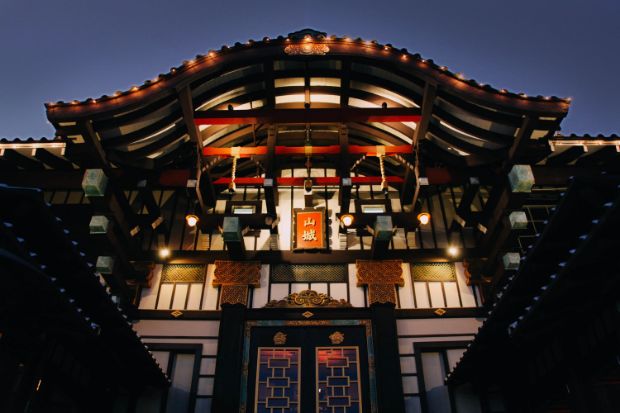
Yamashiro Hollywood
The Yamashiro Historic District is listed on the National Register of Historic Places and consists of nine buildings, including the Yamashiro restaurant. It was built between 1911 and 1914 as a residence by two brothers, Adolph and Eugene Bernheimer, and is said to be a replica of a 17th-century palace in Yamashiro Province in Japan. It has a 600-year-old pagoda imported from Japan. Many films and television shows have been filmed here, including Memoirs of a Geisha and Sayonara, and Nocturnal Animals. The complex now consists of a restaurant, a bar, and lush romantic gardens. Check out their menu here and book a table! Yamashiro also does a wonderful Night Market every Thursday.
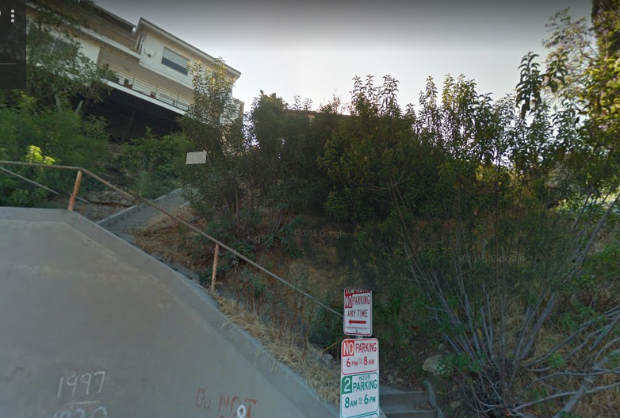
Hollywood Heights Secret Stairs
If you know me, you know I love a good set of secret stairs. I’ve written about the Franklin Hills secret stairs and Beachwood Canyon’s secret stairs. This set of stairs at 1983 Glencoe Way will take you from one end of Glencoe to the other. It’s a great off-the-beaten path staircase loop, great for morning workouts. After arriving at the top of Glencoe you will find another set of stairs. Known as the Paramount Stairs, both sections go up. And I mean up! One way will take you to Paramount Drive and the other to High Tower Drive.
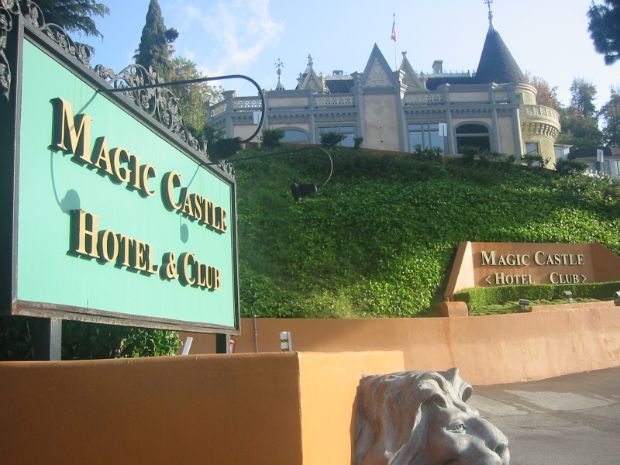
The Magic Castle
While it may not be the only invitation only club in Los Angeles, it is perhaps the most famous (or infamous, depending on who you ask). It is the premier venue for magic in the United States and is the clubhouse for the Academy of Magical Arts. Originally constructed in 1909 as a château-esque mansion for banker, real estate developer, and philanthropist Rollin B. Lane, it is a Los Angeles Historic-Cultural Monument. Guests should be aware: The Magical Castle has a strict dress code for both ladies and gentlemen.
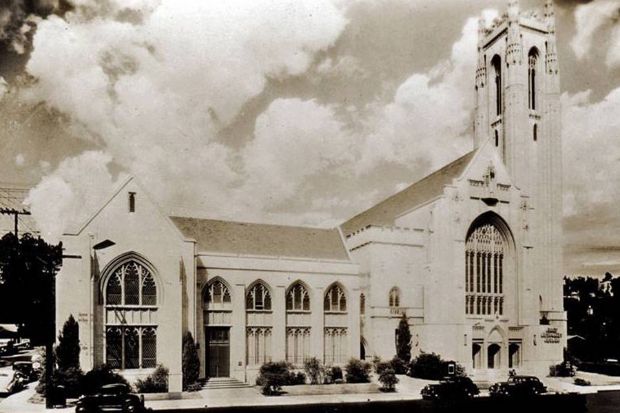
Hollywood Methodist Church
Hollywood United Methodist Church was designed by Thomas P. Barber and built from 1927 to 1930. It is a Los Angeles Historic-Cultural Monument. It is built on land that includes the location of William C. deMille and daughter Agnes de Mille’s first home in Hollywood. The church is also recognized as being one of the first in California to support the No on Prop 8 campaign.
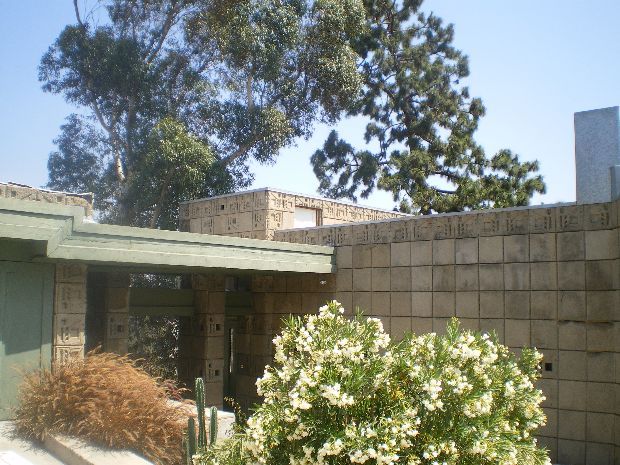
Freeman House
Some may say this is Wright’s least famous of the four textile block homes. Perhaps that’s because from the street the house is seemingly hidden behind a system of Wright’s textile blocks, as the house itself sits on a steep hillside and the rest of the house extends to two additional levels down the slope. While guests at the Hollyhock House, Samuel and Harriet Freeman fell in love with Wright’s architecture and commissioned him to build their own dream home at 1962 Glencoe Way in the Hollywood Heights neighborhood, basically neighbors with The Magic Castle. Wright’s resulting $10,000 commission (and, in a story that played out over and over again between Wright and his clients, the final bill went way over budget, at $23,000) takes full advantage of the precarious Hollywood Hills site. The Freeman House clearly expresses the design rationale of Wright’s textile block construction system, incorporating the openness and central hearth of Wright’s earlier Prairie houses with the extensive ornament of the textile blocks. The walls, constructed of 12,000 cast concrete blocks, are textured on both the interior and exterior to create a unified decorative scheme. Large windows, balconies and terraces make the modest home feel expansive.
Two members of the Los Angeles avant-garde, the Freemans ran their house as an artistic and political “salon” from the time of its construction until the 1980s, which adds to the building’s cultural importance in the history of Los Angeles. Visitors included photographer Edward Weston, Martha Graham, architect Richard Neutra, bandleader Xavier Cugat, and actor Clark Gable. In 1986, after 61 years of residence, the Freemans donated their house to the University of Southern California’s School of Architecture. Maintained by the University, the building was stabilized in 2005 and is undergoing additional renovations due to earthquake damage
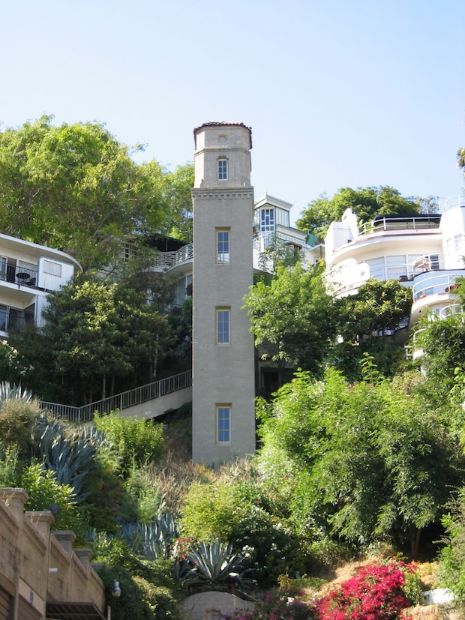
The High Tower
The High Tower is a five-story, private elevator built circa 1920 in the style of a Bolognese campanile. It provides access to a Streamline Moderne fourplex known as High Tower Court, built circa 1937. Architect Carl Kay designed both. The High Tower was featured in The Long Goodbye, The High Window, and Dead Again. It also leads to the Alta Loma Terrace neighborhood, which includes the Otto Bollman House – Lloyd Wright’s first project, built in 1922 – and the B.A.G. Fuller House (6887 W. Alta Loma Terrace), which is a Los Angeles Historic-Cultural Monument.
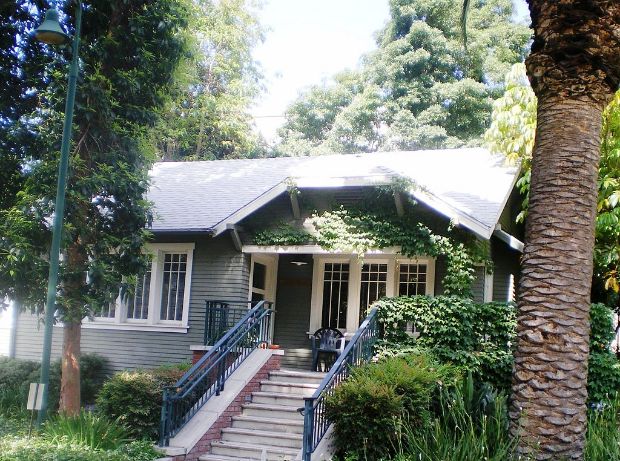
The Highland-Camrose Bungalow Village
The Highland-Camrose Bungalow Village is a grouping of Craftsman style bungalows located at the northwest corner of Highland and Camrose Avenues in Hollywood, Los Angeles, California. The bungalows were designed by the Taylor Brothers and Lee Campbell as residences. The bungalows were later converted to offices, which are occupied by various organizations affiliated with the nearby Hollywood Bowl, including the Los Angeles Philharmonic Orchestra. In 1989, the bungalow village was added to the National Register of Historic Places.
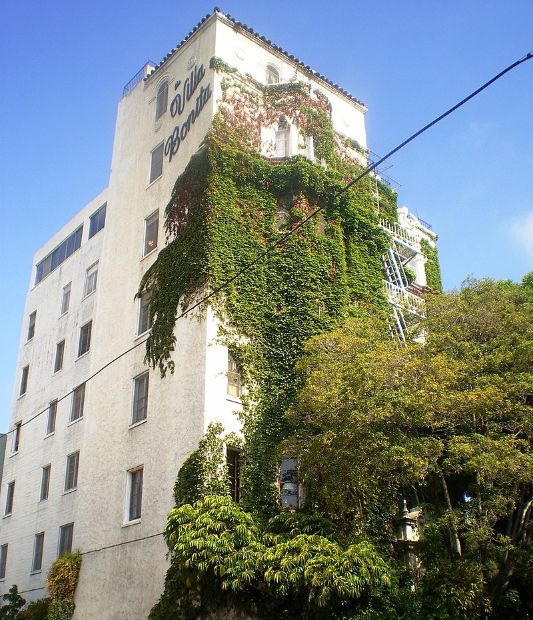
Villa Bonita
The Villa Bonita is an historic apartment building on Hillcrest Road in Hollywood, California. The building is located a short walk from the corner of Hollywood Boulevard and Highland Avenue, just north of Franklin Avenue and west of Highland. It was designed by Frank Webster and built in 1929. It was added to the National Register of Historic Places in 1986 based on its architecture. The seven-floor building was originally built for the cast and crew of director Cecil B. DeMille. Since then, it has housed the likes of Errol Flynn and Francis Ford Coppola.
Other cool stuff about Hollywood Heights:
It’s basically next door to great hiking at Runyon Canyon.
On certain nights you can hear the music coming from the Hollywood Bowl.
Many of the homes are craftsman style and date all the way back to 1900s.
Ben Affleck and Matt Damon developed the script to Good Will Hunting in part while living on Glencoe Way in 1995.
Jackson Browne, Glenn Frey, Don Henley, Linda Ronstadt, and J. D. Souther developed the California Sound of the 1970s while neighbors in the area around High Tower and the Highland-Camrose Bungalow Village.
Kurt Cobain and Courtney Love (musicians) lived at 6881 Alta Loma Terrace in the early 1990s when their daughter, Frances Bean Cobain, was born and briefly taken from their custody. They shared the home with Hole drummer Patty Schemel. Cobain wrote much of In Utero while living there.
Bette Davis (actress) lived at 6655 Alta Loma Terrace when she first moved to Hollywood in 1930. The house was later the focus of the “Siege of Fort Anthony” and was demolished.
Charles Manson lived and worked in an apartment at 6871 Franklin Avenue when he first moved to Hollywood in the late 1950s. A decade later, in 1969, he shot a man at the Franklin Garden Apartments directly across Orchid Ave.
Singer and songwriter Carrie Jacobs-Bond built a home at 2042 Pinehurst Road and lived there from 1917 until her death in 1946. The house was a salon for visiting art lovers and was the eponym for her final book of poetry, The End of the Road.